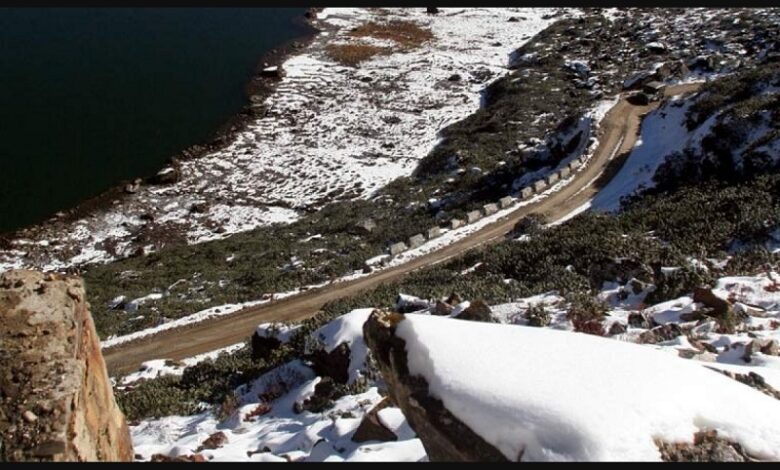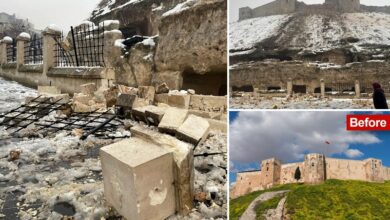Satellite Imagery Reveals China’s Construction Blitz in Aksai Chin, Raising Geopolitical Tensions

Recent satellite imagery has brought to light a substantial construction endeavour undertaken by Chinese forces in the Aksai Chin region, situated east of the Line of Actual Control (LAC), an area historically contested by India. The images, sourced from Maxar and analysed by international geo-intelligence experts, offer a glimpse into the creation of fortified tunnels and shelters carved into a hillside, approximately 60 kilometers east of the Depsang Plains in Northern Ladakh.
This construction initiative, which has been unfolding over several months, showcases the carving of around 11 portals or shafts into the rockface on both sides of a river valley. The motive behind this effort is believed to be the safeguarding of soldiers and heavy weaponry, providing protection from potential Indian airstrikes and artillery barrages that could extend over longer ranges.
Insights from Damien Symon, a prominent satellite imagery expert at The Intel Lab, hint at China’s motivations in Aksai Chin. Symon highlights that the nation’s actions seem geared towards offsetting the advantage currently held by the Indian Air Force in the region. “By establishing underground facilities and developing subterranean infrastructure in such proximity to the border, Chinese strategists seem to be aiming to counterbalance the current advantage held by the Indian Air Force in Aksai Chin,” Symon stated.
Sameer Joshi, CEO of NewSpace Research & Technologies, underscores the post-Galwan clash enhancements made by the Indian Army to its offensive capabilities, particularly in terms of long-range artillery. Joshi contends that China’s decision to delve into constructing these subterranean structures is a direct response to India’s augmented offensive potential.
Joshi articulates, “The Chinese decision to carve into hillsides is directly linked to greater Indian offensive capability.” He further explicates, “The massive construction activity, including hardened shelters, bunkers, tunnels, and the widening of roads, is being done to mitigate this clear and present danger which the Indian Army has imposed on the Chinese deployment doctrine in Tibet.”
Notably, the Indian Air Force is strategically stationed across key airbases along the Ladakh front, with Srinagar and Avantipura serving as traditional frontline fighter bases. However, reports have emerged indicating contemplation within the Indian Air Force to extend the runway at the Air Landing Ground in Nyoma. This site, nestled at an elevation of 13,700 feet near Pangong Lake, would position fighter aircraft within a mere proximity of under 50 kilometers from the LAC with China in eastern Ladakh.
As tensions continue to escalate in the region, Sim Tack, Chief Military Analyst at Force Analysis, a conflict and defence policy analysis firm, discerns China’s construction of fortified positions and subterranean storage facilities as a clear strategy to bolster its military presence in Ladakh. These measures are aimed at fortifying China’s capacity to sustain operations and minimize attrition in the event of a full-blown military escalation in the area.
These developments in Aksai Chin unfold against a backdrop of vigilance between India and China, each closely monitoring the other’s military manoeuvres. This situation stokes concerns of a potential uptick in the long-standing territorial dispute, with both nations grappling for supremacy in a region fraught with geopolitical complexities.
In a landscape characterized by heightened geopolitical tensions and military manoeuvring, the construction activities in Aksai Chin serve as a vivid indicator of China’s strategic ambitions in the region. As both nations maintain a watchful stance and geopolitical dynamics evolve, the delicate balance between peaceful resolution and the spectre of conflict remains a paramount concern on the global stage.
News Mania Desk / Agnibeena Ghosh 1st September 2023






